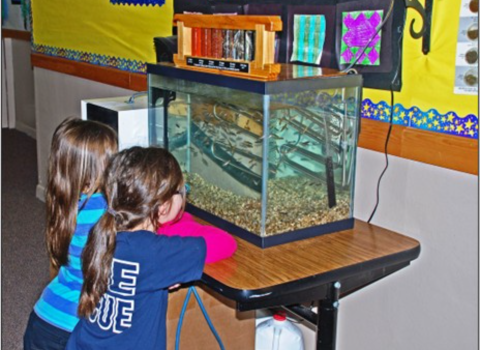If your pet has been “microchipped”, it has been injected with a Passive Integrated Transponder (PIT) tag. PIT tags are about twice the size of a grain of rice. They consist of a tiny coil of wire and a tiny integrated circuit (a “microchip”) enclosed in glass. Each tag contains a unique identification number, which allows whatever it is on or in to be tracked and identified, as if it were a license plate or Social Security number. PIT tags have been used to identify and track mussels, fish, amphibians, reptiles, mammals, birds, bats, and even rocks. When a PIT tag is within range of a reader’s antenna, the antenna’s oscillating magnetic field provides the power that the PIT tag needs to transmit its identification number.
Abernathy has developed a procedure for the construction of a high-performance portable system to read PIT tags for the identification of individual organisms. It exceeds the read range and other parameters of any commercially available hand-held or portable PIT tag reader system. It is useful for surveying large areas for PIT tags or PIT tagged organisms. The system consists of a PIT reader and lightweight battery housed in a customized waterproof case, which is connected to an antenna. Most frequently, this mobile PIT pack system has been used with a large hand-held antenna and the biologist carrying the reader in a backpack (hence the name, PIT pack!). A tablet computer is connected to reader, so the operator can see detections in real-time. In this configuration, the system has been used to determine whether Pacific salmon and Pacific lamprey are being diverted (entrained) into irrigation canals, to track movement of sculpin in small streams, recover lost (shed) PIT tags in the raceways and tanks of a steelhead hatchery, and to locate common carp in a small wetland.
In addition to the supplied design of a large hand-held antenna, it can be used with antennas of a variety of sizes, up to 1 m by 6 m (or larger!). For example, it has also been used with a large, towable, floating antenna. Because of its portability and stand-alone power supply, it is also very useful for testing antenna performance in the field, such as determining whether a particular antenna works well at a potential fixed installation site.
For the biologist interested in building such a system to support their monitoring or research projects, Abernathy has completed construction manual for this system. Click on this link for the PDF.



